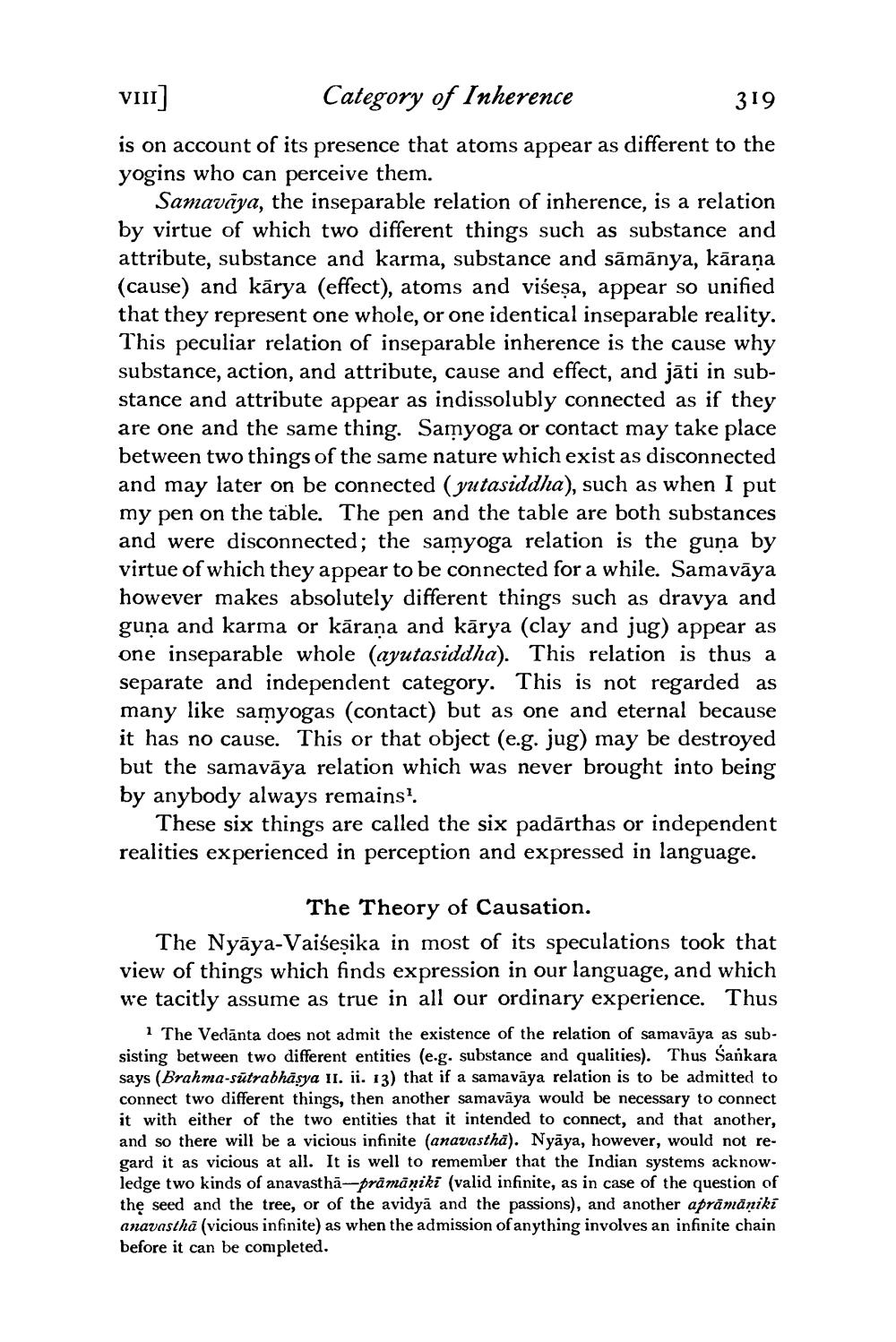________________
VIII]
Category of Inherence
319
is on account of its presence that atoms appear as different to the yogins who can perceive them.
Samavāya, the inseparable relation of inherence, is a relation by virtue of which two different things such as substance and attribute, substance and karma, substance and sāmānya, kāraņa (cause) and kārya (effect), atoms and višeșa, appear so unified that they represent one whole, or one identical inseparable reality. This peculiar relation of inseparable inherence is the cause why substance, action, and attribute, cause and effect, and jāti in substance and attribute appear as indissolubly connected as if they are one and the same thing. Samyoga or contact may take place between two things of the same nature which exist as disconnected and may later on be connected (yutasiddha), such as when I put my pen on the table. The pen and the table are both substances and were disconnected; the samyoga relation is the guna by virtue of which they appear to be connected for a while. Samavāya however makes absolutely different things such as dravya and guna and karma or kārana and kārya (clay and jug) appear as one inseparable whole (ayutasiddha). This relation is thus a separate and independent category. This is not regarded as many like samyogas (contact) but as one and eternal because it has no cause. This or that object (e.g. jug) may be destroyed but the samavāya relation which was never brought into being by anybody always remains!.
These six things are called the six padārthas or independent realities experienced in perception and expressed in language.
The Theory of Causation. The Nyāya-Vaiseșika in most of its speculations took that view of things which finds expression in our language, and which we tacitly assume as true in all our ordinary experience. Thus
1 The Vedānta does not admit the existence of the relation of samavāya as subsisting between two different entities (e.g. substance and qualities). Thus Sankara says (Brahma-sūtrabhāsya II. ii. 13) that if a samavāya relation is to be admitted to connect two different things, then another samavāya would be necessary to connect it with either of the two entities that it intended to connect, and that another, and so there will be a vicious infinite (anavastha). Nyāya, however, would not regard it as vicious at all. It is well to remember that the Indian systems acknow. ledge two kinds of anavasthā--prämāniki (valid infinite, as in case of the question of the seed and the tree, or of the avidyā and the passions), and another aprāmāniki anavasthā (vicious infinite) as when the admission of anything involves an infinite chain before it can be completed.




